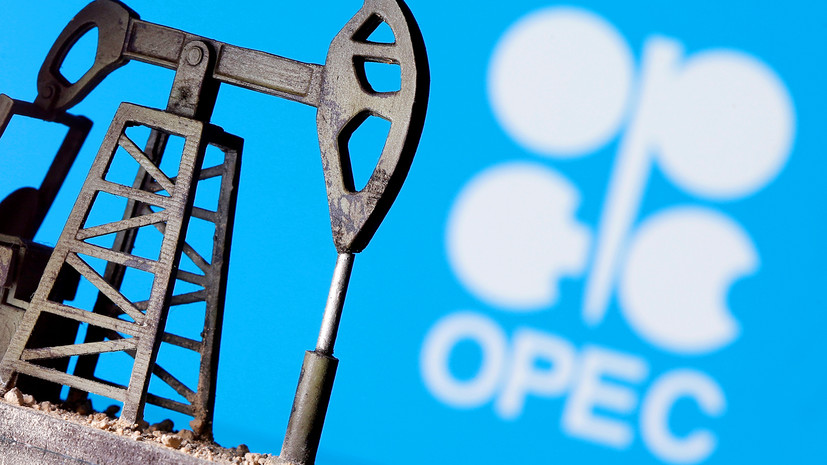On Friday, June 5, world oil prices show strong growth in global trading. In the afternoon, the cost of Brent crude on the ICE exchange in London grew by more than 6% to $ 42.45 per barrel. Quotes of the American WTI variety added about 6% and reached $ 39.55 per barrel. Values are highest since March 6th.
As RT analysts interviewed explain, energy raw materials are getting more expensive ahead of the OPEC + meeting. On Saturday, June 6, the energy ministers of the oil exporting countries can hold a regular meeting and discuss the terms of the deal to reduce hydrocarbon production. This was reported by TASS with reference to a source in the Ministry of Energy of Russia.
Recall, from May 1, the countries participating in the OPEC + agreement renewed their partnership and, to combat the global overabundance of raw materials, reduce oil production. The actions of states should lead to the restoration of the balance of supply and demand of hydrocarbons in the world market and thereby support price increases after the spring collapse.
According to the terms of the agreement reached earlier, from May to June, production of raw materials in the contracting countries should decrease by 9.7 million barrels per day, from July to the end of 2020 - by 7.7 million, and from January 2021 to April 2022 - by 5.8 million. However, as expected, the parameters of the agreement can be revised following the results of the June meeting.
“Now the parties are preliminary discussing the possibility of extending the maximum reduction in production - by 9.7 million barrels per day - for another month, that is, until the end of July. Considering that the oil market is already systematically approaching the balance of supply and demand, such a decision looks most likely, ”Dmitry Babin, stock market expert at BCS Broker, told RT.
Note that in the framework of the transaction, the main volumes of reduction are in Russia and Saudi Arabia. Each of the two countries reduces the production of energy by 2.5 million barrels per day from the base level of 11 million. According to the Ministry of Energy, in May Russia fulfilled the terms of the agreement by almost 100% and reduced production to 8.59 million barrels per day.
According to Finam analyst Alexei Kalachev, if OPEC + agrees to extend the existing agreements for another month, the price of Brent oil will remain in the range of $ 40-42 per barrel. At the same time, prolonging the terms of the deal until the end of summer will allow quotes to rise even higher.
Meanwhile, in the long term, the dynamics of oil prices will depend on the situation with coronavirus, experts say. If quarantine restrictions are further loosened around the world, fuel consumption will recover and the cost of raw materials will continue to rise.
“To fix Brent quotes above $ 40 and further sustainable growth, it is necessary that there are clear signs of a global economy recovering from the negative impact of the pandemic. This will help increase global oil demand, which has been hit hard by the crisis caused by the coronavirus, ”said Dmitry Babin.
Experts interviewed by RT already indicate a recovery in oil demand in China. According to the calculations of the OilX analytical agency, in May, the Asian Republic increased oil imports by 1.3 million barrels per day compared to April to 11.1 million barrels per day. The volume of purchased raw materials was almost 13% higher than a year earlier.
“The May data on oil imports to China also became one of the factors of the observed rise in oil prices. In fact, supplies of raw materials to China have recovered and even exceeded last year's level. This indicates that after the end of the epidemic, demand from key consumers is recovering quite quickly, ”explained Alexey Kalachev.
Rising oil prices positively affected the dynamics of the Russian currency. At Friday's auction, the dollar on the Moscow Exchange fell by 1.3% - to 68.2 rubles, and the euro - by 1.5%, to 77.2 rubles.
The official exchange rate of the Central Bank for June 6-8 was set at 68.63 rubles per dollar and 77.97 rubles per euro.
According to Dmitry Babin, while maintaining the current dynamics of oil prices in the near future, the dollar will remain in the range of 68-71 rubles, and the euro - near 75-78 rubles.

